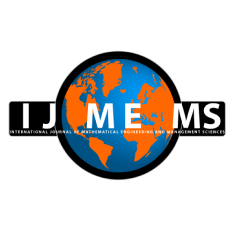Sonam Tyagi
Department of Electronics & Communication Engineering, ABES Engineering College, 201009, Ghaziabad, Uttar Pradesh, India.
Ishwari Singh Rajput
Department of Computer Science & Engineering, Graphic Era Hill University, 263139, Haldwani, Uttarakhand, India.
Bhawnesh Kumar
Department of Computer Science & Engineering, Graphic Era Deemed to be University, 248002, Dehradun, Uttarakhand, India.
Harendra Singh Negi
Department of Computer Science & Engineering, Graphic Era Deemed to be University, 248002, Dehradun, Uttarakhand, India.
DOI https://doi.org/10.33889/IJMEMS.2025.10.5.077
Abstract
Recent years have seen the wine business flourish and become essential to the global economy. Due to rising demand for high-end wines, methods to consistently measure wine quality are needed. In this discipline, machine learning decision-making shows potential. High-dimensional data from several sources may impede processing and classification model performance. Feature selection increases learning and reduces computational costs by picking subsets of features and deleting irrelevant ones. This hybrid architecture uses machine learning to predict wine quality, including a feature selection method to find the most important information. Wrapper-based genetic algorithm (WGA) iteratively removes least significant features and trains a model with the remaining features until the needed number is obtained. We tested the proposed structure on two datasets consisting of 1,599 red wine samples and 4,898 white wine samples, each rated on a scale of 1–10. Additionally, the proposed technique is compared to other cutting-edge machine learning models in the same field. All categorization techniques predicted wine quality well, but WGA-XGB performed best. The study shows how feature selection improves wine quality prediction in different machine learning algorithms. The recommended strategy can be extended to different wine datasets or improved using advanced feature selection or machine learning models to improve forecast performance. Overall, the methodology is designed to be clear, relevant, and reproducible for assessing wine quality in real-world settings.
Keywords- Wine quality, Feature selection, Machine learning, Classification, Prediction.
Citation
Tyagi, S., Rajput, I. S. Kumar, B., & Negi, H. S (2025). Ensemble Learning-Based Wine Quality Prediction Using Optimized Feature Selection and XGBoost. International Journal of Mathematical, Engineering and Management Sciences, 10(5), 1621-1639. https://doi.org/10.33889/IJMEMS.2025.10.5.077.



